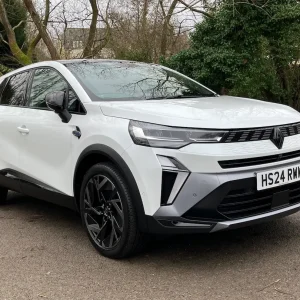Given the BMW 3-series is one of the best business cars on the market and a multiple winner of BusinessCar Awards, a plug-in hybrid version is a car to which you should pay very close attention.
The on-paper 330e numbers read like a fleet manager/driver’s dream. First up, the CO2 figure starts from 44g/km for the SE spec on the standard 16-inch alloys, while even the higher-spec models on larger wheels are still in the same 5% benefit-in-kind tax band.
The official fuel figure is 148.7mpg. Now we all know that official fuel figures rarely reflect the real world, but the 330e can cover 25 miles on a full charge, which should be good enough for most commutes, provided there’s an office chargepoint as well as one at home.
The price, once the Government’s plug-in grant of £2500 is taken into account, is almost identical to that of the current fleet favourite 3-series, the 320ED – even if the P11D value remains higher on the hybrid.
With lower fuel costs and better residual values, this makes the 330e 2.1p per mile cheaper to run than the 320ED in terms of whole-life costs, according to KwikCarcost.
The on-paper greatness continues in the way the 330e drives, which is to say it’s just like any other
quick 3-series saloon.
Despite the hybrid’s petrol engine being a 2.0-litre straight out of the 320i, it’s certainly quick enough to deserve its designation number that suggests there’s a larger engine under the bonnet. The car also rides and handles just like any other 3-series, which means great steering feedback, a firm but not unpleasant ride and great refinement.
In regular hybrid mode, the car will carry out the 0-62mph run in 6.1 seconds, which is nearly as quick as a 330d. The addition of an 88hp electric motor to the 184hp petrol engine means that there’s no shortage of power, even low down the rev range.
However, the 330e can also be driven in pure-electric mode up to 75mph, assuming there’s enough charge in the battery.
The 330e features a third drive mode, which saves the battery charge and relies on the petrol engine, so that you can use the pure-EV mode when you reach a town after a longer motorway journey.
Now you’re asking, ‘there’s a catch, isn’t there?’ And there are actually a couple, but they’re small points.
Firstly, because the battery and electric motor are positioned at the rear of the car they eat up a lot of boot space – 110 litres to be precise, taking the 330e’s boot down to 370 litres. And because the 330e will only be available as a saloon for the time being, there’s no way round this issue other than to fold down the rear seats for carrying any significant loads.
The second problem is the smaller fuel tank. Measuring 41 litres, rather than 60, means that if you’re doing a single long journey the range is no more than about 400 miles on purely petrol power.
However, these two points are minor, and as a result the 330e now has to be the one to pick from the 3-series saloon range.
BMW 330e Sport |
| Model price range £33,935-£36,735 |
| Residual value 33.6% |
| Depreciation £11,475 |
| Fuel £1875 |
| Service, maintenance and repair £2613 |
| Vehicle Excise Duty £0 |
| National Insurance £991 |
| Cost per mile 62.0p |
| Fuel consumption 148.7mpg |
| CO2 (BIK band) 45g/km (5%) |
| BIK 20/40% per month £28/£57 |
| Warranty 3yrs/unltd miles |
| Boot space (min/max) 370 litres |
| Petrol engine size/power 1998cc/184hp |
| Electric motor 88hp |
| Total power 252h |





